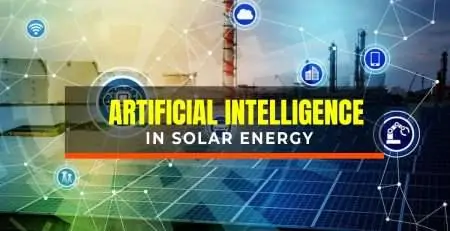The Solar Energy In Jordan
Compared with other neighboring Arabian countries, Jordan is not so good at natural resources. The desert kingdom imports almost 97% of its energy requirements and is planning to make the shift to 20% power consumption through greener resources. Having a small to the mid-sized economy, the country relies majorly on imports to fulfill the energy demands.
But, now the nation is facing rapid growth in solar investment. Its renewable energy sector has reached over $5 billion. This makes the country to be counted among the major countries that attract investments in the sector.
Energy Consumption in Jordan
The overall energy consumption has reached around 17,380.17 gigawatt hours (GWh) as per the data for 2021, in the country. This stands for an increase of 3.7% from 16,759.5GWh, compared with the previous year, says Energy and Minerals Regulatory Commission (EMRC).
From the reports of Jordan News Agency, we come to know that out of the total energy consumption, nearly 44.49% i.e. 7,732.3GWh, is contributed by Household and government use.
As per the EMRC data, the peak in power demand has reached 3,770MW during winter, and the figure indicates 3,351MW during the summer.
Two major challenges arise in front of the country. One is the growing energy demand and the other is the scarcity of domestic resources available to meet such demand. With limited resources, Jordan is in the position of importing 7,656 ktoe of energy in order to fulfill the energy requirements. So, the cost of the consumed energy here falls to as much as 17% of the GDP.
Energy situation in Jordan
The electricity sector of the kingdom is dominated by 3 distribution companies.
- Jordan Electric Power Company – JEPCO
- Irbid District Electricity Distribution Company – IDECO
- Electricity Distribution Company – EDCO
The existing energy mix of the country Jordan results in an average of 675 g CO2e/kWh emissions.
Since the nation is poor in its resources, it is importing 97% of its energy. The annual cost of such purchases has hiked over $5 billion. The kingdom is considering a broad electricity rationing and it is expected to have surges in electricity prices.
Accelerating energy transition – Solar energy in Jordan
The increase in population, economic growth, and poor resources make the country encounter challenges in fulfilling the energy demand. The bad news is there are very few traditional sources in the kingdom and it already imports most of its energy supply.
Fortunately, now the nation is making the right move of switching 20 % of its power consumption to green energy. The great part is Jordan has around 300 sunny days every year. This enables the nation to have a strong focus on the energy investment of the state.
Having limited natural resources and minerals, Jordan is also a non-fossil fuel-producing country. But, the best thing is it has plenty of renewable energy resources. The solar radiation in the kingdom lies between 5-7 kWh m-2 day. These untapped resources have a high potential to meet the overall energy demands of the country.
Steps Of The Kingdom In Solar Energy Generation
There were key actions identified by the Jordanian Ministry of Energy and Mineral Resources that would accelerate renewable energy deployment and aid in the progress of the renewable energy transition.
- The Jordanian Government approved an $ 18bn energy strategic plan in 2008, which has guided the country till 2020. This plan has covered all energy sectors, right from energy generation to transmission, and covers renewable energy as well.
- With 716 megawatts of solar power in operation, it is expected to have an additional 636 megawatts of solar PV.
- Jordan opened Shams Ma’an Power Plant in 2016. This ensures that the country officially landed the right on the renewable energy map. This plant is the second-largest solar farm in Jordan.
- This farm contains 640,000 panels, covering two square kilometers, and is capable of producing 1% of the overall electricity of the nation.
- As a part of solar energy generation, the first large-scale solar projects in Jordan have been situated in the Aqaba Special Economic Zone. This would increase the renewable energy contribution to 10% of the energy mix of the kingdom.
2023 outlook of Jordan in solar
It is anticipated that Jordan will enrich its capacity from 1.7 GW in 2020 to 2.7 GW by 2023, based on the reports of the International Renewable Energy Agency (IRENA).
Since there will be a notable spike in solar energy capacity, reliance on Jordan on imported fossil fuels will be reduced. The nation envisions 48.5 % of its electricity generation obtained from local energy sources by the end of 2030. With the long-term potential of solar power, and having large desert areas with a low population, the solar energy production of the nation shines bright.
As per the IRENA report, in Jordan, rooftop solar installations will account for 1.4 GW of solar energy capacity by 2030. So, households and businesses will be capable of producing their own electricity.







